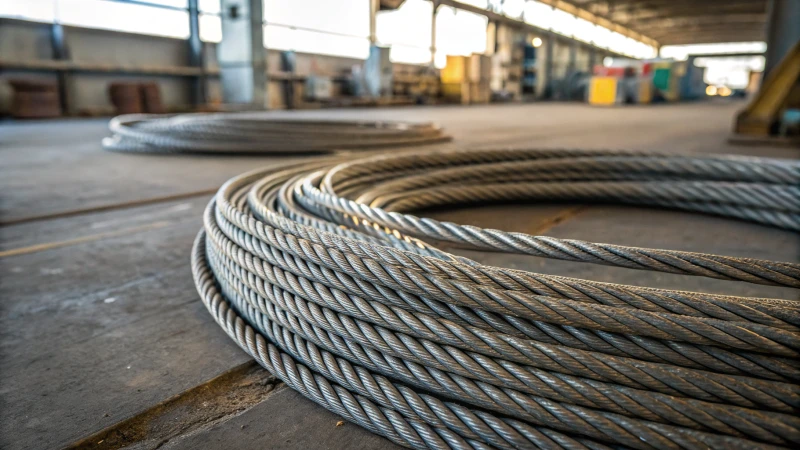
Selecting the right steel wire rope is crucial for safety and performance in various industries. But how do you know which one to choose?
The diameter of a steel wire rope significantly affects its tensile strength: as the diameter increases, so does the tensile strength due to a larger cross-sectional area resisting tension. However, larger diameters can reduce flexibility, impacting the rope's suitability for certain applications.
I remember when I first had to choose a steel wire rope for a major project. It felt like stepping into a complex puzzle, where each piece had to fit perfectly. Understanding the balance between diameter and flexibility was crucial. Larger diameters boost tensile strength, which is fantastic for handling heavy loads, but they can also make the rope less flexible. This can be tricky in projects requiring frequent bending or movement.
As I delved deeper into this topic, I learned about advanced manufacturing techniques, like micro-alloying and precision drawing, which help optimize these trade-offs. These innovations can enhance performance without compromising safety, ensuring that every project not only meets but exceeds industry standards.
Larger diameter ropes are always more flexible.False
Larger diameters increase tensile strength but reduce flexibility.
Increasing rope diameter enhances tensile strength.True
A larger cross-sectional area increases the rope's tensile strength.
How Do Diameter and Tensile Strength Relate to Each Other?
Imagine the thrill of pulling off a construction feat, knowing every strand of wire rope is perfectly chosen for strength and safety.
Diameter and tensile strength share a straightforward relationship: as the diameter increases, tensile strength typically rises due to more material resisting tension. However, larger diameters can reduce flexibility and fatigue resistance.
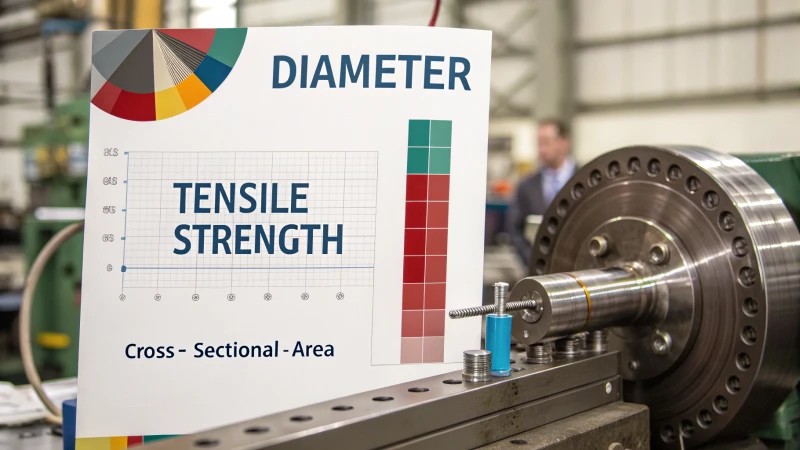
The Basics of Tensile Strength
I remember standing at a construction site, watching as heavy machinery lifted beams that seemed impossibly large. It struck me how crucial tensile strength is in such moments. It's essentially the max stress a material can endure when stretched or pulled without snapping—a vital consideration whether you’re selecting materials for skyscrapers or complex mining operations1.
Diameter's Impact on Strength
The size of a steel wire rope has always fascinated me. A bigger diameter means a larger cross-sectional area to handle tension, translating into greater tensile strength. It's like being back in math class, where you learn that tensile strength is proportional to the square of the diameter. Here's a snapshot of what that looks like:
| Diameter (mm) | Approximate Tensile Strength (kN) |
|---|---|
| 10 | 50-60 |
| 20 | 200-250 |
Trade-Offs with Flexibility
But there's a catch. When I first started sourcing materials, I learned quickly that while larger diameters can boost strength, they often mean sacrificing flexibility. Imagine trying to bend a thick, sturdy rope; it resists, just like a 20 mm rope might resist bending in dynamic environments.
Advanced Manufacturing Techniques
Thanks to advancements in technology, there's hope for those of us caught in this balancing act. Techniques like micro-alloying or precision drawing allow for the creation of ropes that maintain high tensile strength without increasing diameter significantly. Compact strand designs2 can even provide a 15% boost in tensile strength compared to standard designs.
Safety and Standards
In high-stakes applications such as elevators or cranes, picking the right diameter becomes a careful dance between load capacity and adhering to safety standards like EN 12385. I can’t emphasize enough how understanding these details can make or break project success, especially for procurement managers in construction and heavy machinery sectors.
For a deeper dive into how diameter affects properties like flexibility and fatigue resistance, explore different material configurations3. This knowledge is key to ensuring the longevity and reliability of your projects.
Larger diameters always increase tensile strength.False
While larger diameters often increase strength, other factors can influence it.
Increasing diameter may reduce material flexibility.True
Larger diameters enhance strength but often compromise flexibility due to rigidity.
How Does Diameter Affect Flexibility in Steel Wire Ropes?
Ever wondered how the size of a steel wire rope influences its flexibility?
As steel wire rope diameter increases, flexibility decreases due to the larger cross-sectional area. This stiffer structure resists bending, so choosing the right diameter means balancing strength and flexibility for your needs.
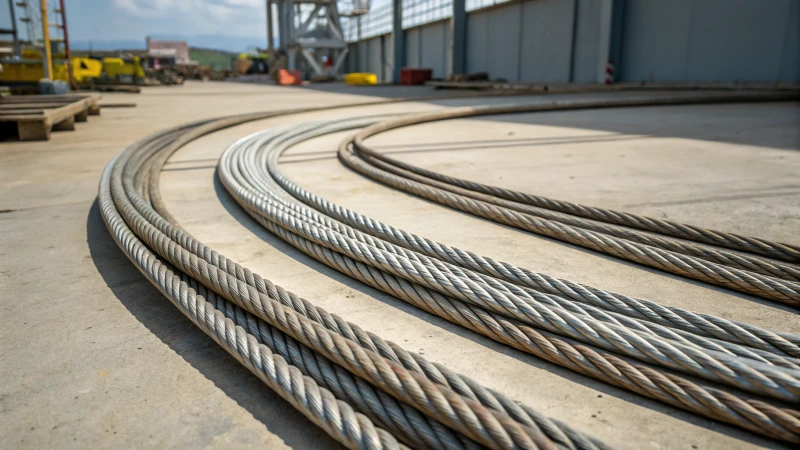
The Science Behind Diameter and Flexibility
I remember the first time I had to decide on the right steel wire rope for a project. It was a real eye-opener to learn how diameter impacts flexibility. Larger diameters are like that stubborn branch that refuses to bend when you're trying to craft the perfect marshmallow roasting stick by the campfire. They contain more material, which makes them stiffer and less flexible.
Applications Requiring Flexibility
In industries like construction and mining, flexibility isn't just a bonus—it's crucial. I’ve seen cranes in action, and trust me, ropes need to be flexible enough to wrap around pulleys smoothly while still holding up under heavy loads. Smaller diameters often do the trick or those with specialized strand arrangements.
| Application | Preferred Diameter | Flexibility Requirement |
|---|---|---|
| Cranes | 10-15 mm | High |
| Elevators | 16-20 mm | Moderate |
| Mining | 18-25 mm | Low |
Material Innovations
The fascinating part is how material science is continuously evolving. New techniques are being developed to make ropes more flexible without losing strength. Imagine being able to have your cake and eat it too, with compact strand designs or micro-alloying processes4 that enhance bending capacity even at larger diameters.
Practical Considerations
For people like John and Emma, who have to make procurement decisions, understanding these nuances is essential. It's like trying to find the perfect pair of shoes—you want something stylish yet comfortable enough for daily wear. Balancing load capacity with sheave compatibility is key to meeting safety standards while ensuring efficiency.
Industry Examples
- Construction: You know those massive cranes you see at building sites? They typically use ropes with diameters around 10-15 mm for better maneuverability.
- Mining: In this rough and tumble environment, thicker ropes are preferred, even if it means sacrificing some flexibility.
- Elevators: These use moderate diameters for a smooth ride without compromising on strength.
By understanding these factors, procurement managers can make well-informed decisions on the best steel wire ropes for their specific needs.
Larger diameter ropes are more flexible.False
Larger diameters increase stiffness, reducing flexibility.
Smaller diameter ropes offer higher flexibility.True
Smaller diameters allow easier bending, enhancing flexibility.
How Do Advanced Manufacturing Techniques Enhance Rope Performance?
Ever wonder how the ropes you use every day have become stronger and more reliable than ever? Let's dive into the fascinating world of advanced manufacturing techniques.
Yes, advanced manufacturing techniques like micro-alloying and precision drawing significantly improve rope performance by enhancing tensile strength, flexibility, and durability. These innovations result in ropes that are superior to traditional options, especially in demanding scenarios.
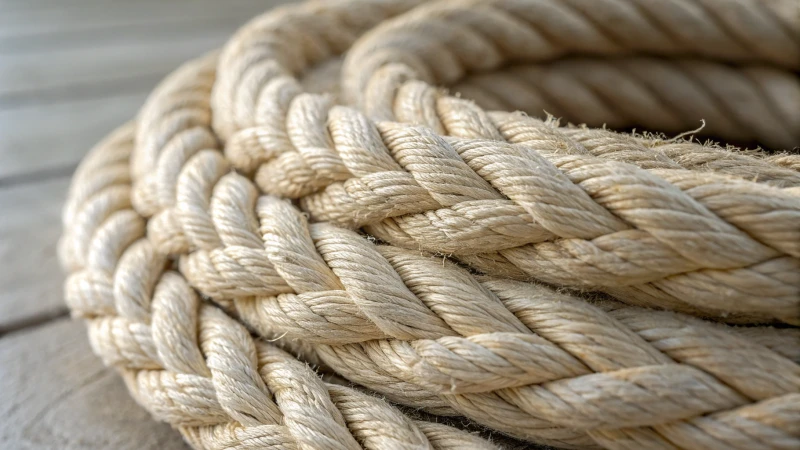
The Role of Micro-Alloying
I remember the first time I learned about micro-alloying; it was like discovering a secret recipe that transforms ordinary steel into something extraordinary. This technique adds tiny amounts of alloying elements to steel, allowing ropes to boast incredible strength and toughness without bulking up. Imagine having a rope that's not only stronger but also light enough to handle easily—a game-changer in my field.
Benefits of Micro-Alloying:
- Enhanced Strength: It’s like giving the rope a superpower—refining its internal grain structures so it can handle more stress.
- Increased Durability: Perfect for those harsh environments where wear and tear are a given.
Precision Drawing and Its Impact
Then there's precision drawing, which reminds me of my uncle's meticulous woodworking skills—everything must be just right. This process shapes the wire with utmost precision, ensuring each strand is perfect and defect-free. You end up with a rope that's not only uniform but also robust enough to withstand repeated use.
| Feature | Traditional Methods | Precision Drawing |
|---|---|---|
| Surface Finish | Rough | Smooth and uniform |
| Dimensional Tolerance | High variance | Tight and consistent |
| Durability | Moderate | High |
Precision drawing minimizes those pesky weak spots that could lead to failure, crucial for applications like elevators5 where safety can't be compromised.
Compact Strand Design Innovations
This innovative design is like packing a suitcase efficiently—more fits in the same space without losing flexibility. It’s ideal for industries where ropes must bend frequently yet remain strong, such as mining6.
Key Advantages:
- Strength Increase: Up to 15% more tensile strength is like giving your project an extra layer of security.
- Flexibility Retention: Keeps things moving smoothly without compromising strength.
Future Trends in Rope Manufacturing
Looking ahead, I’m excited about the integration of AI and 3D printing. These technologies promise even more leaps in performance and adaptability, allowing ropes to meet the most diverse needs. As advancements continue, I’m optimistic about the future where ropes become not only stronger but also smarter, adapting seamlessly to whatever challenges we throw their way.
Micro-alloying increases rope strength.True
Micro-alloying refines grain structures, enhancing rope strength.
Precision drawing reduces rope durability.False
Precision drawing enhances durability by minimizing defects.
What Should I Consider for Wire Rope Diameter Safety?
Choosing the right wire rope diameter is like finding the perfect balance between strength and flexibility in your daily lift.
When selecting wire rope diameter, focus on tensile strength, flexibility, sheave compatibility, and safety compliance with standards like EN 12385. While larger diameters provide greater strength, they often compromise flexibility.
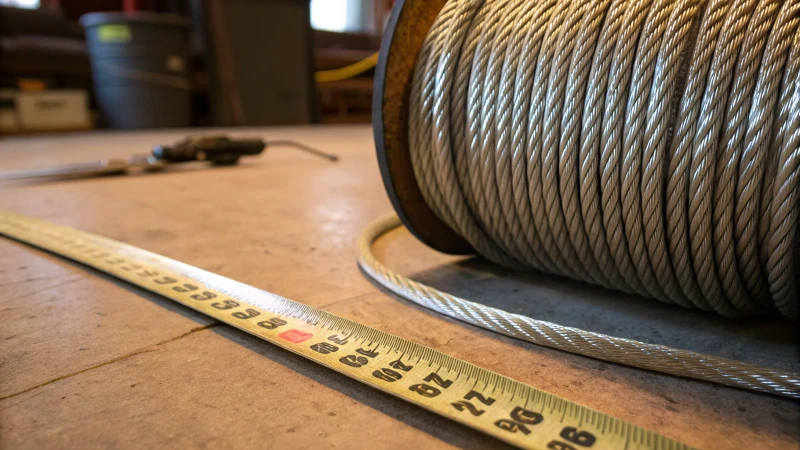
Understanding Tensile Strength and Diameter
I remember the first time I had to choose a wire rope for a project—it felt a bit like picking the right tool for the job. The tensile strength of wire rope is a key factor, and it’s fascinating how it scales with the square of its diameter. This means if you double the diameter, you’re looking at about four times the strength. It's kind of like how doubling the thickness of a pancake makes it four times as satisfying, but with ropes, we're talking about supporting immense weights. For instance, a 20 mm rope7 can typically hold between 200-250 kN.
| Diameter (mm) | Approx. Breaking Strength (kN) |
|---|---|
| 10 | 50-60 |
| 20 | 200-250 |
These numbers can vary based on the material and construction, but they give a good starting point.
Flexibility vs. Strength
Balancing flexibility and strength was another crucial aspect I had to consider. Larger diameters enhance strength but often reduce flexibility. This can be a bit like wearing a heavy coat that keeps you warm but limits your movement. For ropes over 16 mm, you might need a bending radius of 40-50 times their diameter to avoid excessive wear.
Compatibility with Equipment
Ensuring compatibility with equipment was also a learning curve. Mismatched sizes between wire ropes and sheaves can lead to issues like misalignment and increased wear—imagine trying to fit a square peg in a round hole. It’s especially important in systems like elevators, where balancing load capacity and sheave compatibility is essential.
Compliance with Safety Standards
Following safety standards such as EN 123858 was non-negotiable in my experience. These standards ensure that wire ropes meet industry requirements for both safety and performance.
Advanced Manufacturing Techniques
Advanced techniques like micro-alloying or precision drawing can be game-changers, enhancing both strength and flexibility. I’ve seen ropes with compact strand designs achieve up to 15% higher tensile strength than standard ones—almost like how a tightly knit sweater is warmer yet flexible.
Safety Margins and Load Factors
For applications such as elevators, maintaining a safety factor of 8:1 for tensile loads is vital. This means the rope should be capable of handling eight times the working load before breaking—a critical safety margin that provides peace of mind in high-stakes applications.
For those looking for more detailed guidance on selecting the right wire rope for specific needs, consulting manufacturers' specifications or industry guidelines here9 can be incredibly helpful. It’s like having a roadmap that ensures you’re on the right track.
Doubling rope diameter quadruples tensile strength.True
Tensile strength is proportional to the square of the diameter.
Ropes over 16 mm require a bending radius of 20 times their diameter.False
They need a bending radius of 40-50 times their diameter.
Conclusion
The diameter of steel wire rope directly influences its tensile strength; larger diameters increase strength but reduce flexibility, impacting suitability for various applications.
-
Explore how diameter affects tensile strength in mining operations to ensure optimal material selection. ↩
-
Discover how compact strand designs enhance tensile strength without compromising flexibility. ↩
-
Understand how different material configurations impact flexibility and fatigue resistance. ↩
-
Learn about cutting-edge micro-alloying techniques that improve wire rope flexibility without compromising strength. ↩
-
Explore how precision drawing enhances wire quality, leading to superior rope performance. ↩
-
Understand why compact strand designs are favored in mining for their strength and flexibility. ↩
-
Explore detailed specifications on breaking strengths to ensure you select a rope that meets your operational needs. ↩
-
Learn about industry standards to ensure compliance with safety regulations and best practices. ↩
-
Access comprehensive guidelines to assist in making informed decisions when choosing wire ropes for your projects. ↩

